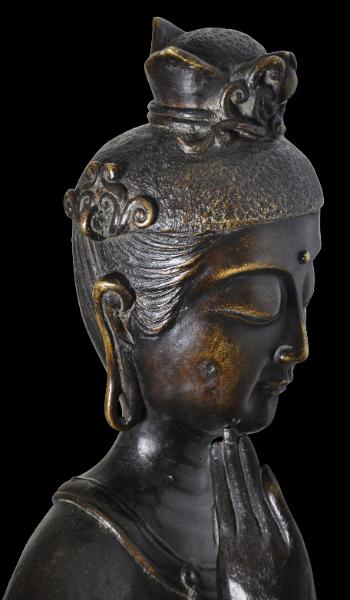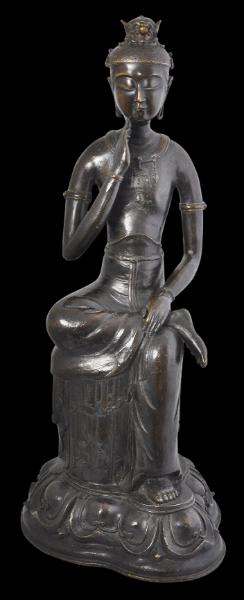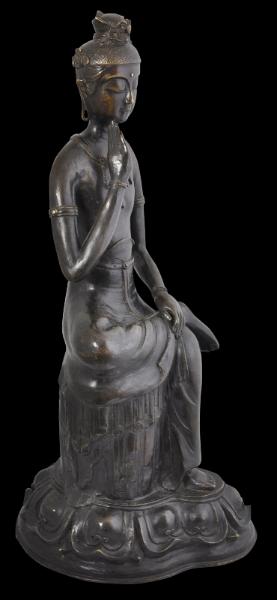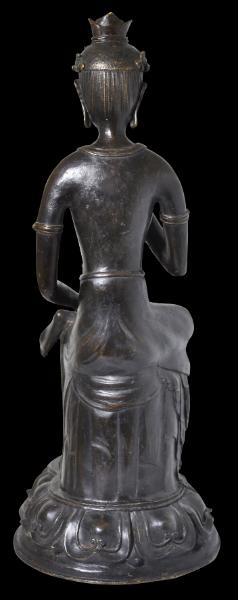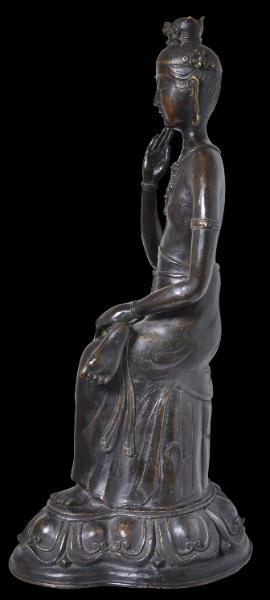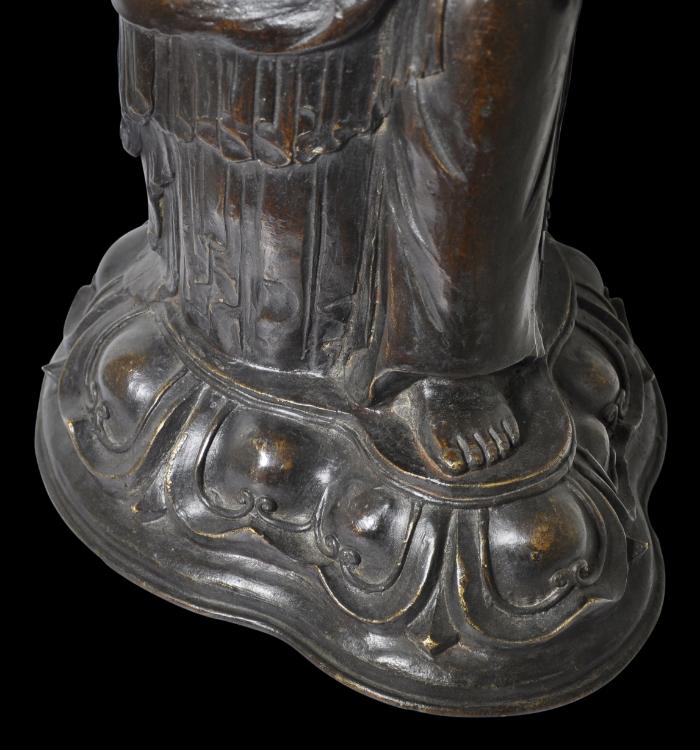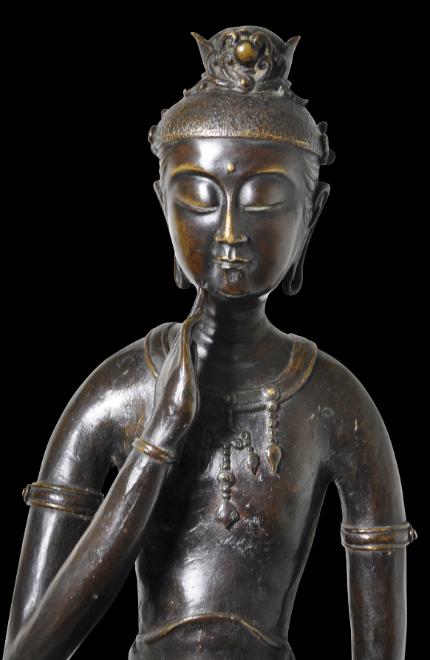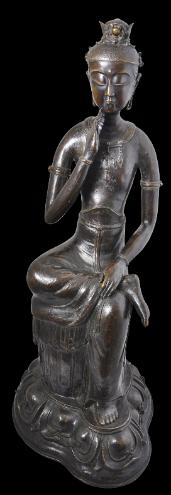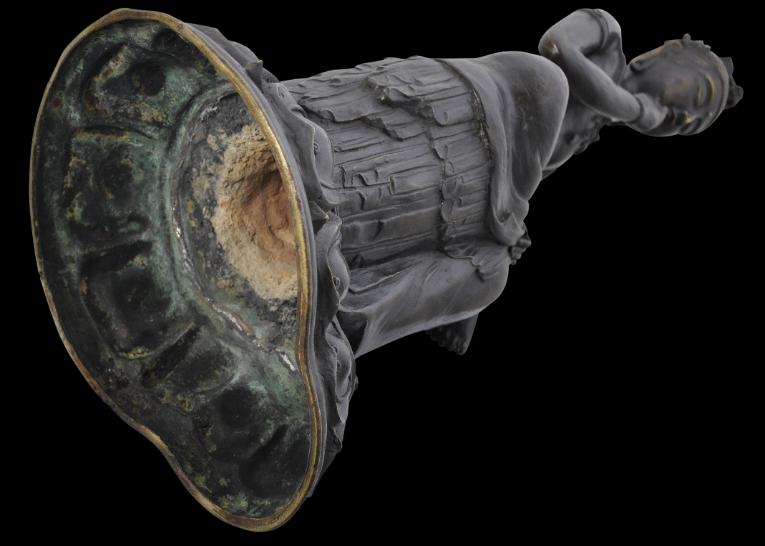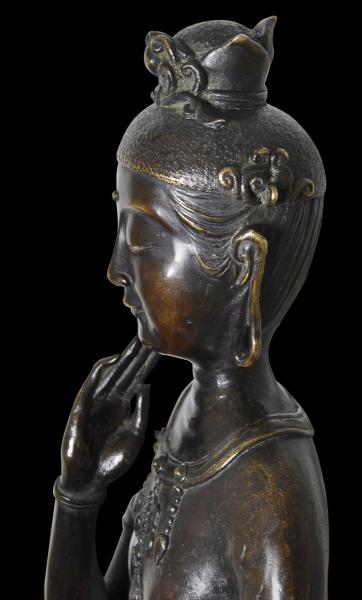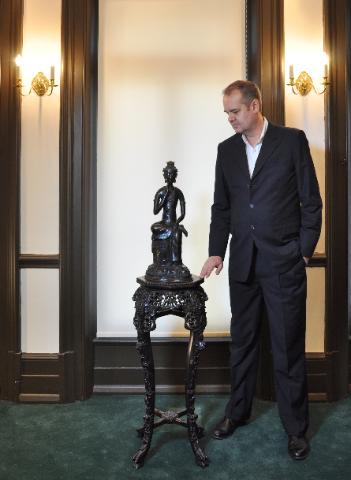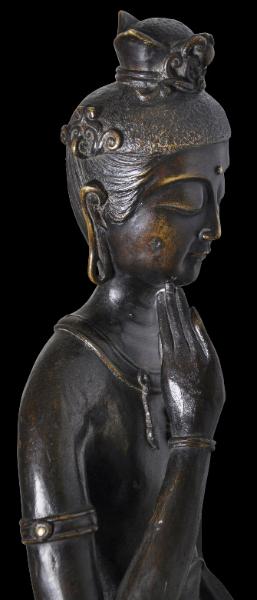
Maitreya, Mireuk, Korea
Bronze Figure of Maitreya (Mireuk)
Korea
late 19th century
height: 62cm
This finely-cast image of the bodhisattva Maitreya (Mireuk in Korea) is a late 19th century interpretation of a famous Silla Kingdom form of Maitreya cast in the 6th-7th centuries, which has become the most famous image in Korean Buddhism. Interpretations of the basic form with its pensive position with a contemplative expression and one arm raised supporting the chin, the other arm resting on the ankle of the raised right leg, have been cast throughout the centuries in Korea. Most have elongated arms and legs, but the example here is notable for its particularly elongated limbs, torso, earlobes and neck.
The figure is bare-chested other than for jewellery, but is covered from the waist down. The drapery is not highly stylised, but flowing and realistic and follows the contours of the body. The slender figure of the Maitreya Bodhisattva suggests Baekje (a kingdom in southwest Korea)influences, but the bridgeline, sharp nose, and realistically flowing drapery suggest that the original Korean Maitreya was probably cast by local Sillan bronze artists.
The
bodhisatva sits on a tree trunk the bark of which is finely defined. And in turn, the image and trunk rest on a tri-form base edged with a border of prominent lotus petal border.
According to Lee & Patry Leidy (2013, p. 147), the conflation of Maitreya with bodhisattva figures seated in a pensive pose can be traced to the development of the Dilun tradition founded by two influential Indian monks who were active at the Northern Qi court. Later, parallels emerged between the pensive form of Maitreya and a group of young aristocrats known as the
hwarang (the ‘flower boys’) who were trained in horseback riding and martial arts as well as secular subjects such as literature, music and mathematics, and who took arduous pilgrimages to remote and mountainous locations to advance their physical and spiritual development. Members of this group came to be identified as manifestations of Maitreya.
The image here is in perfect condition with a varying dark patina. It is tall, sculptural and very elegant.
References
Lee, L.K., ‘Buddhist sculptures in Korea’, Arts of Asia, July-August 1981.
Lee, S. & D. Patry Leidy, ‘Silla: Korea’s golden kingdom’,
Arts of Asia, September-October 2013.
Lee, S. & D. Patry Leidy,
Silla: Korea’s Golden Kingdom, Metropolitan Museum of Art, 2013.Provenance:
private collection, England.
Inventory no.: 2986
SOLD

